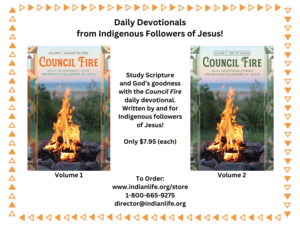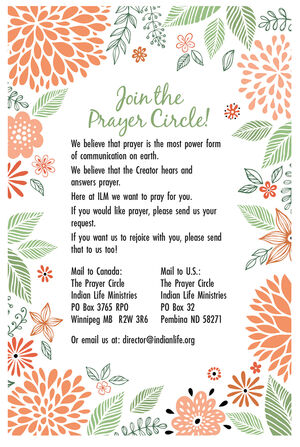Wind River Reminds Moviegoers: Native Women Matter
Last updated 10/5/2017 at 2:38pm
ALBUQUERQUE, NEW MEXICO (ANS—September 10, 2017)
I remember how heart-broken I was in May 2016 when 11-year old Ashlynne Mike was found murdered and violated on the Navajo Reservation. That morning I had awakend to an Amber Alert. I then followed the story of Ashlynne’s abduction throughout the day until her body was found near Shiprock, New Mexico. Later, I took part in a vigil at the Indian Pueblo Cultural Center, celebrating her life and coming to terms with the reality of assault on Native American women around the country.1
To say the least, the state of New Mexico was shocked and rocked to the core with Ashlynne’s death. And though it has been over a year since her murder, assaults on Native American women have not slowed down.
Case example: As I recently drove down a freeway heavily populated by Native American tribes, a billboard spoke to the crisis, reminding drivers that one out of every four Native American women suffer some kind of assault or abuse. Government statistics state, “Native women are more than 2.5 times more likely to be raped or sexually assaulted than women in the USA in general”.2
Because of the reality of violence inflicted upon Native women, when the recent movie Wind River was released I knew I had to see it, not because I wanted to gloat in the crime, but to use the opportunity to give attention to the cause.
Wind River is a movie about an FBI case of homicide, tracking down an assailant of a female found assaulted on a reservation. And, other than the stellar acting by Jeremy Renner and Graham Greene, the beautiful scenery, and epic cinematography, the main take-away from the movie for me is that Native women are abused—and in the case of Wind River, raped—at an alarming rate.
Sobering Statistics
Consider some statistic provided by Futures Without Violence on domestic abuse:
• American Indian women residing on Indian reservations suffer domestic violence and physical assault at rates far exceeding women of other ethnicities and locations.
• A 2004 Department of Justice report estimates these assault rates to be as much as 50% higher than the next most victimized demographic.
• National annual incidence rates and lifetime prevalence rates for physical assaults are also higher for American Indian and Alaskan Native women compared to other women.
• In a 2008 CDC study, 39% of Native women surveyed identified as victims of intimate partner violence in their lifetime, a rate higher than any other race or ethnicity surveyed.
• A study from 1998 that utilized a large national probability sample (n=8000) found that American Indian/Alaskan Native American women were the most likely racial group to report a physical assault by an intimate partner.
• According to the Bureau of Justice Statistics, US Department of Justice, and the Office of Justice Programs at least 70% of the violent victimizations experienced by American Indians are committed by persons not of the same race—a substantially higher rate of interracial violence than experienced by white or black victims.
• In a 2006 study, 96% of American Indian respondents who had been a victim of rape or sexual assault had experienced other physical abuse as well.
• During a physical assault, Native American and Alaska Inuit women were more likely to be injured than women of all other groups and more of these injuries needed medical care.
• Violence against Native American women occurs as a gauntlet in the lives of Indian women: at one end verbal abuse and at the other murder. Most Indian women do not report such crimes because of the belief that nothing will be done.
Fittingly, Newsweek called Wind River, “a blistering exposé of violence against Native American Women,” quoting director Terry Sheridan as saying, “The social issues that Native Americans face are the same as in other parts of the country—domestic abuse, poverty, drug addiction, alcoholism—but on the reservation, no one is watching or listening.”3
Talking About the Problem
With the reality of abuse so prevalent with Native women the question arises: what can the average person do?
I suggest the acronym TALK:
T—Tell. Tell people about the problem. Share with them statistics, stories, and solutions.
A—Act. Act in proactive ways. Support efforts like the Coalition to Stop Violence Against Native Women.4
L—Love. Love the afflicted and affected. People who’ve suffered from abuse and assault feel unsafe, fearful, and, guilty.5 Let the recipient of violence know that they belong in a caring community of people, safe, and worthy of grace. As individuals made in God’s image, they are to be loved lavishly.
K—Knowledge. This word can be used in two ways. One, knowledge must be shared about the problem, and, two, knowledge must be shared on how to cope with the problem, helping the recipient recover from rape or assault.
Helpguide recommends the following6:
• Reach out to someone you trust
• Challenge your sense of helplessness and isolation
• Assign responsibility where it belongs: on the rapist
Helpguide continues by providing tips for dealing with flashbacks and steps to take to reconnect your body to your feelings.
6. https://www.helpguide.org/articles/ptsd-trauma/recovering-from-rape-and-sexual-trauma.htm
About the writer: Brian Nixon is a writer, musician, artist, and minister. He’s a graduate of California State University, Stanislaus, Veritas Evangelical Seminary, and is a Fellow at Oxford Graduate School.
Story provided by ASSIST News Service (www.assistnews.net).
From a Christian standpoint, I recommend a 3-2-3 P Plan.
3-2-3 “P” Plan
The first three P’s are: pain, pray, and purpose.
First, one must recognize the pain, the external and internal, and work to relieve it in a healthy way. Remember not to deny the pain, but to rely upon a person trustworthy to help you through it.
Two, pray about problem, even for the rapist or assailant. Prayer will provide the proper perspective.
Three, look for God’s purposes in the situation. Though the Lord is not the author of sin, sin’s reality is recognized by God and dealt with justly and perfectly in accordance to His nature and timeframe.
Once the three P’s are procured, follow them up with two other P’s: personal and principles. One, understand that your person (mind, body, and soul) will be affected by the pain, but through the pain, learn God’s principles as outlined in the Bible, finding solace in scripture.
Finally, implement the final three P’s: perseverance, patience, and perspective. One, recognize that you’ll need determination to heal the pain; it probably just won’t disappear. Because of this, patience will be needed; it takes time for a wound to heal. Third, garner a proper perspective. An event such as assault or rape does not define who you are; your infliction does not illuminate your true person: you are a child of God, loved by the Beloved, beautiful and whole. Rest in God’s peace for a broader perspective.











